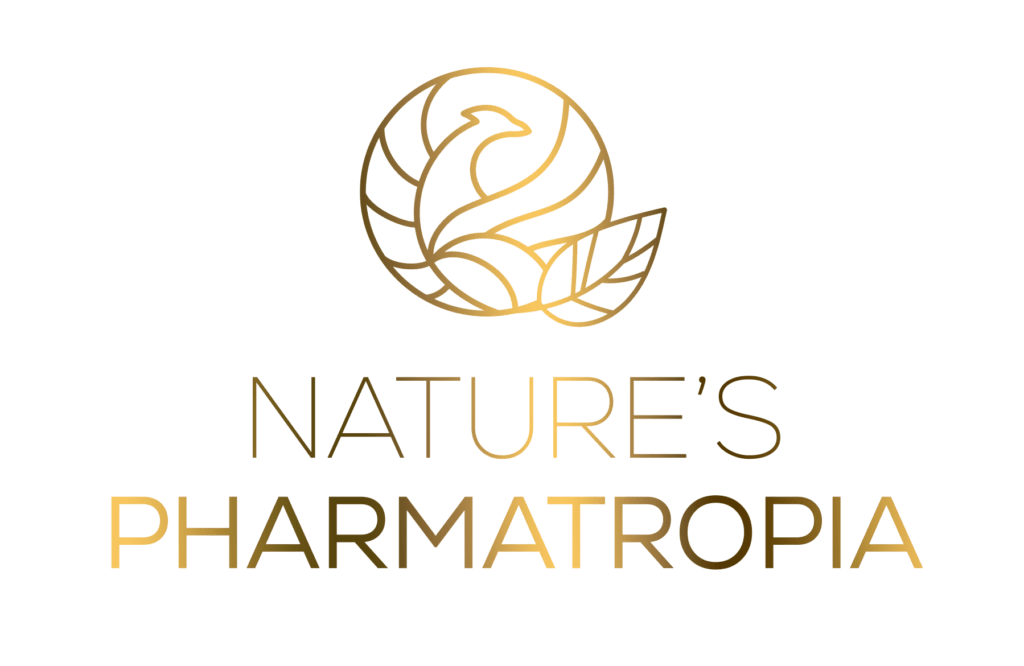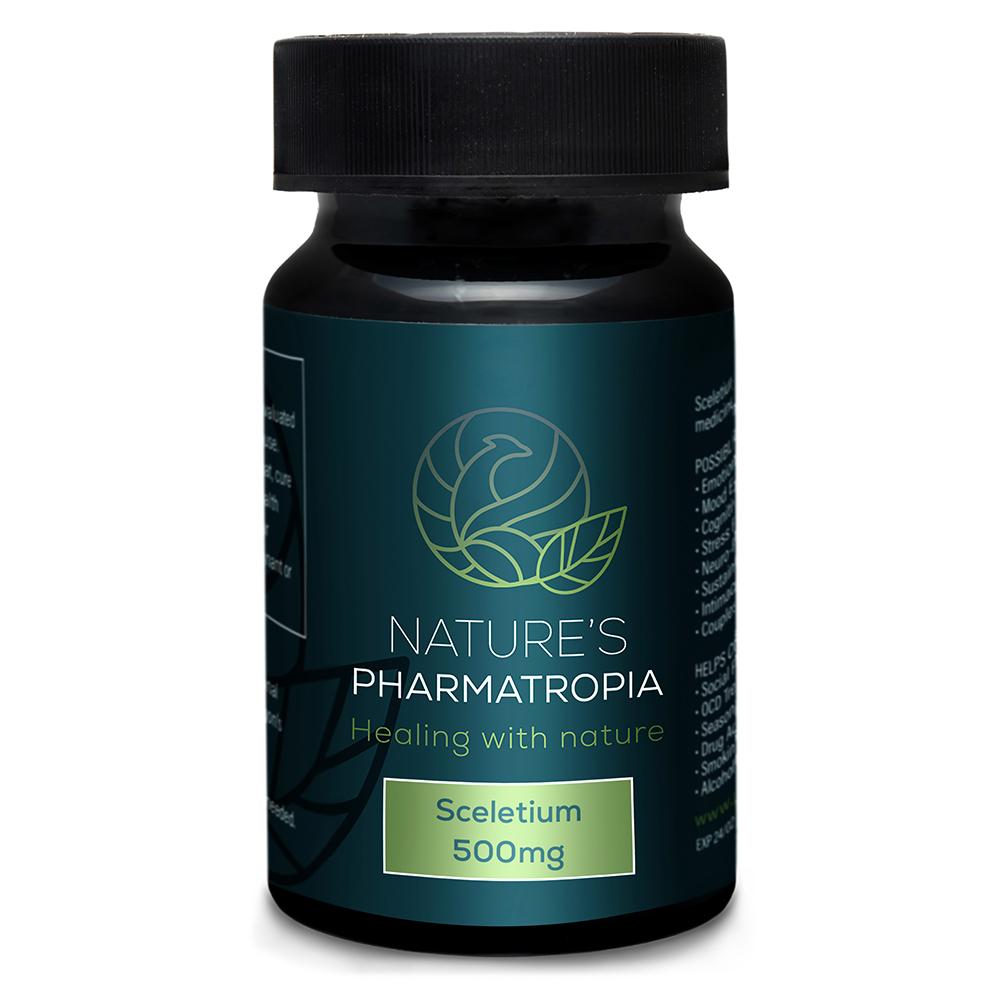To me, Sceletium is among the most extraordinary and precious plants on Earth. The Bushmen imparted their understanding and wisdom of this plant with us so that we might use it to help mend the world’s broken hearts. This heritage, which they have protected and nurtured since ancient times, is their gift to us, and it couldn’t have come at a more opportune time given the state of the world today. It is one of the greatest heart-healing plants there is, both stimulating and healing the heart. Sceletium gifts us with an entirely different perspective our emotions that can prevent us from becoming overwhelmed by them.
I have accumulated experience and understanding with Sceletium from both a theoretical and practical standpoint, having learned directly from Bushmen, and also researching its history, traditional uses, and unique and highly complex chemistry. Sceletium is a special plant for me because it has helped me through some of the most difficult times in my life and has never left my side. Without the help I’ve received from Sceletium, I don’t think I would have made it to where I am now. My understanding of this herb has evolved over the years, and I am still amazed by its complexity and nuance.
Eventually, I realized the special place that Sceletium and the Mesembrine alkaloids hold in the field of medicines. Although thousands of plants with medicinal value produce a wide variety of “effects,” only Sceletium has the unique ability to directly open the heart (or emotional center) and provide a new understanding and perspective on one’s emotions.
It not only restores a person’s capacity for profound love and compassion, but also mediates the entire mind and nervous system toward a state of peace, clarity, and expansiveness. Sceletium carries a gentle feminine presence and can give you an objective viewpoint of your own emotions, helping you gain perspective when you feel like you’re drowning in your own feelings. In addition to restoring mental and emotional stability, sceletium also fosters a sense of belonging and a firm footing in the physical world. It does this more effectively and reliably than many other plants I’m aware of.
Sceletium is a perfect companion and a priceless treasure in a time when so many people are struggling with information overload, stress, busyness, anxiety, and a lack of connection. Truly, the more I learn about this plant, the more respect I have for its innate intelligence.
While its clinical efficacy is unmatched in the treatment of anxiety, depression, and obsessive-compulsive behaviors, it is also of great benefit when used simply to relax the body and clear the mind, leading to a sense of deep calm and fullness. And for me, its greatest benefit is the way it helps you gain an entirely different perspective on your concerns, frees you from stress, makes it easier to talk to others, mends broken bonds, and deepens your capacity for love and mutual respect and understanding.
About Sceletium
Kanna (Sceletium tortuosum), also spelled canna and channa, and known by its Dutch colloquial name kougoed or sometimes Bushmens ecstacy, is a succulent plant with a long history of traditional recreational and medicinal use among southern African indigenous communities.
This undervalued and globally legal plant has a wide range of medicinal, phycological and physiological effects. It is a potent anxiolytic, antidepressant, and overall mood booster, providing users with increased energy, joy, and appreciation for sensory stimulation. Sceletium is not a hallucinogen on its own, but its ritual use by the San (Bushmen) and Khoikhoi (Hottentot) indigenous groups suggests that it may serve as a visionary tool in the right context or when combined with other plants.
Sceletium was unknown to the Western world for centuries. Due to its potential to alleviate pain, anxiety, and depression in a more natural and less harmful manner than conventional pharmaceuticals, this plant is gaining popularity as a result of the discovery of its chemical properties over the past few decades and the increasing number of users reporting its therapeutic benefits.

Ancient knowledge and history:
As our earliest written records only date back to 1662, we do not know precisely how far back in time Kanna knowledge and usage date. It is probable that its use by the San (Bushmen) and Khoikhoi (Hottentots) of Southern Africa dates back to the continent’s ancient pre-history. Sceletium tortuosum or Kanna is a member of the genus Sceletium, which contains approximately two dozen commercially valuable plant species.
While the Bushmen (San) were traditionally hunters and gatherers , the Khoikhoi culture eventually became more settled and settled down. The original inhabitants of Southern Africa can be traced back to these ancient tribes. They developed relationships with the Sceletium (Kanna) in the areas of Namaqualand (in the west of Southern Africa) and Kannaland (in the south central part of South Africa known as the Klein Karoo).
It’s clear that the Bushmen recognized the medicinal and magical value of Kanna due to their traditional culture with a strong connection to the land and the plants of their eco system. This information is believed to be sacred and has been passed down through the ages to the present day.

The fact that the Khoisan word for Sceletium tortuosum (Kanna) also refers to the massive Eland (Taurotragus oryx Pallas), one of the largest antelope in the world and a creature considered a power animal of deepest magical significance, is highly fascinating.
The eland is the “trance animal par excellence,” according to Bushmen belief, as brought to light by Lewis Williams. It is a common and prominent motif in Southern African Bushmen rock art. Symbolically, the Eland was linked to fertility, marriage, rainmaking, divination, trance, dance, and healing; its close connection to Sceletium extended far beyond its practical value as a major target of the hunt.
Kanna was soon referred to as kougoed, which literally translates to “something to chew on.” This slang term initially referred to an oral preparation of the plant made by drying and ‘fermenting’ it, but it eventually entered the local vernacular to describe the plant itself.
In the 18th century, a piece of land in the semi-desert region of the Little Karoo in the Western Cape was given the name “Cannaland” due to the favorable conditions for Sceletium shrub growth. Inhabited by the Attaqua Khoikhoi, it was identified by the Dutch as the region’s Kanna supply source, giving rise to a class of influential traders dealing in this valuable plant.
The Khoi would gather the plant and trade it for cattle and other goods with other, sometimes distant, communities. Kanna was well-known throughout the region for its numerous properties; workers chewed small doses throughout the day to increase energy and stave off hunger and thirst, and larger doses were chewed, smoked, used as a tincture, or brewed as a tea to enjoy its relaxing, narcotic effects.
Sceletium was also commonly used as an analgesic and sedative; chewing it relieved toothache and abdominal pain, and it numbed the jaws prior to tooth extraction. In its fresh, weaker form, Kanna was administered to children as a mild sedative; two drops of its juice were sufficient to calm a teething infant or put a child to sleep for several hours.
Why it is important to use fermented Sceletium
For centuries, the Bushman/KhoiSan of southern Africa have used fermented preparations of Sceletium tortuosum to induce medicinal benefits. It is asserted that the fermentation process alters the alkaloid composition, thereby enhancing the effect.
In this study, a validated ultra performance liquid chromatography–mass spectrometry method was utilized to quantify the alkaloid content of S. tortuosum samples before and after controlled fermentation. Despite only a slight change in the mesembrenol and mesembranol content during fermentation, the mesembrine content significantly increased from undetectable to 7.40–20.8 g/mL. After fermentation, the initial concentration of mesembrenone decreased from 8.00–33.0 g/mL to 1.30–32.7 g/mL. Fermentation also increased the total alkaloid concentration.

Pharmacology
Four of the seven active alkaloids found in Sceletium tortuosum are well-known to science: mesembrine, mesembranol, mesembrenone, and mesembrenol. Sceletium tortuosum’s total alkaloid concentration in dry plant material is highly variable, ranging from 0.05% to 2.3%, depending on growing conditions and harvest time.
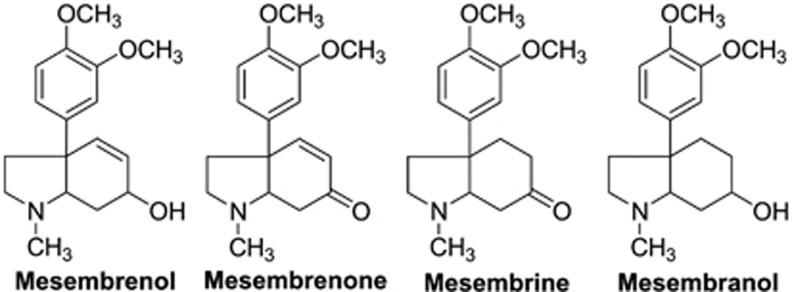
These alkaloids function as selective serotonin reuptake inhibitors (SSRIs), meaning that they prevent the reuptake of serotonin, the neurotransmitter that regulates mood, emotions, sleep, hunger, and social behavior, thereby making more of it available for its receptors; this is the same principle upon which conventional antidepressants and anxiolytics operate.
Sceletium’s second action mechanism inhibits phosphodiesterase-4 (PDE4). PDE4 is an enzyme that hydrolyzes cyclic AMP (cAMP) and is highly expressed in the amygdala, nucleus accumbens, and hippocampus, which are brain regions involved in memory, anxiety, and depression.
Animal studies indicate that PDE4 inhibitors can reverse depression, enhance cognition, and reduce anxiety. A small, double-blind, placebo-controlled crossover study demonstrated that oral supplementation with sceletium significantly reduced the threat circuitry of the human brain, which may have beneficial implications for anxiety reduction. PDE4 inhibitors may improve cognitive function and overall neurological health by promoting the differentiation of oligodendrocyte progenitor cells and facilitating their proliferation.
Accelerated re-myelination of damaged central nervous system cells. In addition, it has been suggested that SSRIs and PDE4 inhibitors work synergistically, as SSRI use may upregulate PDE4 activity, thereby reducing long-term SSRI sensitivity. Consequently, a compound capable of both actions may be more effective and have a wider range of therapeutic applications than either intervention alone. Mesembrine and mesembrenone, the two major alkaloids in sceletium, are responsible for the majority of the extract’s effects. Mesembrine is the most prevalent serotonin reuptake inhibitor (SRI), whereas mesembrenone is both an SRI and a PDE4 inhibitor.
It has also been discovered that these alkaloids interact with the CB1 receptors, which have been implicated in the regulation of mood, pain, and appetite, to name a few of the many processes governed by this vast network of endocannabinoid receptors.
The influence of sceletium on hunger and thirst is an additional intriguing feature of this element. During long hunting expeditions, the San and Khoikhoi peoples of southwestern Africa chewed sceletium to stave off hunger. This may be beneficial for those whose anxiety and/or depression cause them to seek solace in food. Sceletium is non-addictive and does not cause withdrawal symptoms, which are common when discontinuing pharmaceutical antidepressant and anxiolytic drugs. It may be combined with other supplements to support stable emotions and a positive mental outlook, such as 5-HTP and vitamin B6, but caution should be exercised when recommending sceletium to patients taking antidepressant or anti-anxiety drugs.
Dopamine and noradrenaline are also affected by sceletium, which is a very significant fact to note. Higher concentrations of mesembrine affect the uptake of noradrenaline and dopamine, according to in vitro studies. This may partially explain why larger doses of sceletium produce sedative-like effects that are absent at lower doses.
The Japanese researcher Hirabayashi and his team conducted three studies in which varying doses of powdered Kanna were administered to cats and dogs exhibiting clinical signs of stress, dementia, or excessive nocturnal barking and meowing. The researchers reported near-complete success in alleviating these symptoms, with no adverse effects even after administration of high doses and for extended periods of time.
Numerous anecdotal accounts from users support the notion that sceletiumis a safe, effective, and highly advantageous therapeutic tool. Among the most frequently reported benefits are a reduction in anxiety, an increase in self-assurance, improved social functioning, feelings of relaxation and meditative tranquility, heightened introspection, appreciation for the beauty of nature, and cessation of alcohol and tobacco cravings.

Psychological Health
There is no better all-around herb for elevating mood and calming emotions than sceletium. It’s a great way to unwind on all levels—physically, emotionally, and cognitively. Relaxes the mind from its incessant ruminating, provides stability to the emotions, and encourages more open communication of ideas, feelings, and experiences. It has a restorative effect on the mind and heart and promotes a profound union of intellect and feeling.
Lifting Spirits
When compared to other popular botanicals, such as St. John’s Wort, Rhodiola, Ginkgo biloba, Mucuna, Valerian, Gotu kola, Kava, Passiflora, L-Theanine, etc., Sceletium is far more effective. When compared to other herbs, including L-Tryptophan, 5-HTP, and Griffonia, Sceletium significantly improves serotonin function in the brain (without causing the drowsiness that is often associated with these serotonin precursors).
Anti-Depressant
Clinically, SSRIs (Selective Serotonin Re-Uptake Inhibitors) and occasionally SDRIs (Selective Dopamine Re-Uptake Inhibitors) are the drugs of choice (Serotonin-Dopamine Re-uptake Inhibitors). Their primary mechanism of action is to increase serotonin in the brain, and while this does occur, albeit to a limited degree, the well-documented side-effects are universally unpleasant, undesired, and best avoided. Sceletium is primarily an SRA (a Serotonin Releasing Agent), with some SSRI activity as a byproduct, to achieve its effect. It has always been found that releasing agents, as opposed to re-uptake inhibitors, are more efficient, well-rounded, profoundly humane, and in sync with normal neuronal function (which are nearly always problematic). Also, unlike chemical SSRIs, there are no negative consequences associated with using this method.
Anti-Anxiety
Sceletium is the quintessential anxiolytic (anti-anxiety agent) Both the millennia-long history of Kanna and the modern-day experiences of people who have used Sceletium attest to this. Anxiety can stem from a number of different things, but one common thread is that the anxious person’s mind is racing, and their autonomic nervous system is also overactive. Sceletium’s apoptogenic properties allow it to act on the mind directly, helping to calm an overactive mind and bring about a sense of calm, centeredness. People who have anxiety can attest to its unmistakable nature.
Phobia in Social Situations
To put it simply, social phobia is just a form of anxiety that manifests itself when a person is forced to interact with others. Sceletium users experience an increase in synaptic serotonin, which leads to a state characterized by calmness, openness, and social warmth—one in which they are more likely to feel at ease when expressing themselves and less likely to be overly self-conscious. In fact, those with social phobia who take Sceletium do not merely “manage” social situations; they often find them enjoyable. One of the most important takeaways from this Sceletium-mediated state is the realization that one can actually learn to enjoy and feel at ease in those kinds of social situations. Sceletium is not a band-aid solution, but rather a means to genuine long-term transformation.
Remedy for Obsessive Compulsive Disorder
Similar to its anti-anxiety benefits, Sceletium has shown remarkable success in treating obsessive-compulsive disorder. This condition is alleviated when the mind is allowed to calm down and become more integrated with the body and the heart, a state necessary for the development of non-obsessive and non-compulsive behavior.

SAD, or the Mood Disorder Associated with the Seasonal Change
While the precise cause of Seasonal Affective Disorder (SAD) or “Grey Weather Syndrome” (SWS) is not fully understood, it is generally accepted that low serotonin levels in response to decreased sunlight in winter play a major role. The summer and winter seasons are equally unforgiving for those who spend a great deal of time indoors working. Reduced exposure to sunlight has been shown to increase the activity of the Serotonin Transporter (SERT), an enzyme responsible for reusing and deactivating serotonin in the brain’s synapses. Additionally, low serotonin (due to serotonin metabolizing to melatonin) is linked to low melatonin, which disrupts sleep and decreases alertness during the day. Sceletium is the remedy of choice for treating mood and sleep disorders because it acts as both a Serotonin Releasing Agent (SRA) and a Serotonin Re-Uptake Inhibitor (SRI), dramatically raising blood levels of active serotonin and melatonin.
Relieving Tension
In today’s fast-paced society, few people are immune to the stresses of information overload, complexity, time scarcity, and the need to multitask. To deal with the stresses of modern life with grace, it helps to maintain composure and a sense of center, even in the midst of chaos. Sub-threshold doses of sceletium allow us to relax, gain perspective, and channel what would normally be perceived as “stressful” into positive emotions like excitement and creativity.
Cognitive Booster
An unruffled mind is a perceptive mind. When we let our guard down, our minds are better able to generate ideas on the fly, store and retrieve information when we need it, and have better overall cognitive functioning. Sceletium’s mesembrenone is well-documented as a potent PDE4 inhibitor. Strong pro-cognitive (including long-term memory improving), wakefulness-promoting, and anti-inflammatory effects have been attributed to PDE4 inhibitors. Therefore, a Sceletium strain or extract high in mesembrenone could serve as a suitable substitute for luteolin in a CILTEP-style Nootropic stack (derived from artichoke extract).
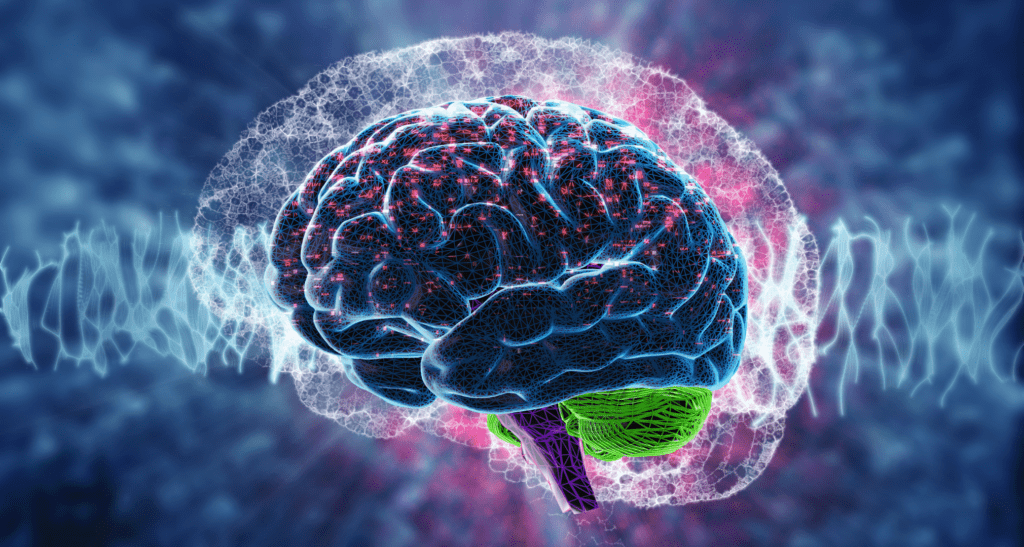
Neuro-Protective
PDE4 Inhibitors, like those mentioned in the section on cognitive enhancement, also have potent neuro-protective properties, warding off excitotoxic, hypoxic, and inflammatory harm to the brain. There are many things that can cause damage to our brains and nervous systems in the modern world, but sceletium helps protect us from the majority of them.
Constant Focus and concentration
The ancient San hunters proved that Kanna not only helps one remain focused and alert for extended periods of time without experiencing mental fatigue, but that it also helps one go for days on end without eating or drinking without feeling the slightest bit of physical weariness. This provides strong support for the cautious application of Sceletium to the treatment of ADD and ADHD; however, the most recent high-quality research suggests that a dopamine enhancer, such as Mucuna, in combination with Sceletium would be more effective than Sceletium alone as a treatment for ADD/ADHD.
Increased Sexual Desire
Sceletium, especially when taken in a single large dose, has the effect of breaking down emotional barriers and removing fear in interpersonal relationships. More so than any other medicinal plant or psychoactive plant studied to date. As a result of the increased capacity for trust that comes with this state of being human, romantic relationships have the potential to grow in depth across all dimensions of their existence.
Therapy for Couples
Sceletium, taken in a single, but lower dose, would be found to be very useful in a formal therapeutic context, for the same reasons stated in the Intimacy Enhancement paragraph above, assuming the therapist is skilled, professional, has experience working with people in heightened states of awareness, and of course has experience with Sceletium.
Sexually-encouraging lubricant
Sceletium has a profound and authentic aphrodisiac and pro-sexual effect, one that is based on emotional responsiveness rather than mere physically generated changes in the body, because of the way it increases intimacy, as described in the Intimacy Enhancement paragraph above. Increased physical relaxation, heightened tactile sensitivity (in both sexes), and increased stamina in men. Indeed, Sceletium is the best friend of men who have problems with premature ejaculation. There is new, unpublished evidence that 7-mesembrenone also acts as a mild PDE5 inhibitor, improving erection strength and vascularity and boosting blood flow to the pelvic region in both sexes. In addition, the profound physical-emotional grounding and opening effects of Sceletium will help women who experience painful intercourse or vaginismus (the inability to allow penetration) due to psychological causes. This may lead to a complete transformation, restoring full sexual function and expression.
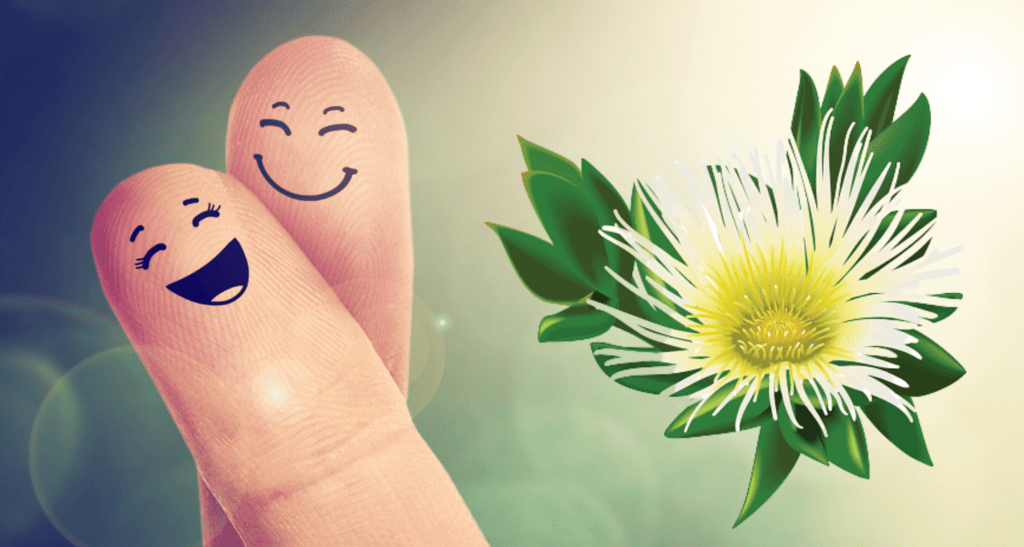
Giving Up Smoking
To help you quit smoking, sceletium has many useful properties. It not only lessens the severity of nicotine withdrawal but also significantly reduces the craving and desire to smoke. Anyone who has tried to quit smoking knows that the most difficult part is overcoming the incessant cravings and thoughts about cigarettes. Many have found that Sceletium’s ability to reduce the mind’s obsessive tendency was the deciding factor in their ability to finally kick the habit.
Substance Dependence
Sceletium has been found to be very effective in regards to all drug addiction for very similar reasons as in the paragraph about quitting smoking above (including tobacco and alcohol). Opiate and other CNS depressant addictions in particular benefit greatly from this reduction in withdrawal symptoms. More importantly, mesembrenone’s role as a potent PDE4 Inhibitor makes it an excellent tool for repairing brain damage brought on by chronic abuse of central nervous system (CNS) stimulants like cocaine, amphetamines, methamphetamines, and methcathinone. Sceletium, when used regularly, can also reverse the negative effects of high-dose MDMA use, which includes repairs to the brain’s serotonin receptors (though Sceletium should not be used concurrently with MDxx style drugs).
Alcoholism
Sceletium is a highly effective treatment for alcoholism and the underlying causes of alcohol dependence, such as the cravings and other pre-alcoholic behaviors. This is for the same reasons that it is effective in helping people quit smoking and dealing with drug addiction. Kanna has been shown to have anti-addictive properties through multiple mechanisms, and it is also used as a safe and effective substitute for alcoholic beverages in some South African cultures, where it is known as “onse dro drank” (our dry drink). One of the most common reasons people drink too much is to relax, but Kanna accomplishes this same goal in a way that is both safe and non-toxic to the liver.
Rest More Deeply
Because of its effect on serotonin, Kanna raises melatonin levels, but that’s not all it does: it’s also one of the most effective relaxants out there for both the body and the mind. As a result, being in a state of both mental and physical calm is very helpful for getting to sleep and staying asleep. Kanna users have reported having better sleep and more energy in the morning. Additional anecdotal evidence suggests a decline in both muscle cramps, restless legs and night sweats supports this theory.
Bodywork
Bodywork treatments like massage, deep tissue work, and fascia release techniques like Rolfing and Structural Integration have all benefited from the use of sclerotium. Sceletium’s ability to soothe and open the emotional body has the knock-on effect of relaxing the fascia, resulting in increased sensitivity to touch and a wider range of motion. Both physical therapists and patients have reported an improvement in accessing chronic muscle tension and a prolonging of its effects.
Sports That Test Your Endurance

Traditional San hunter-gatherers, the earliest known consumers of Kanna, relied heavily on the herb in preparation for long days of hunting. As a result, they were able to walk for long periods of time, covering great distances in the scorching Kalahari sun without stopping for water. The use of Kanna also helped them maintain their composure and watchfulness during extended periods of waiting and following. Kanna has been studied for its effects on modern endurance sports, where it has been found to boost endurance, reduce the occurrence of muscle cramps, and provide a mild analgesic effect that allows top athletes to safely push themselves to their pain thresholds.
Happiness Enhancer in Social Settings
One of Kanna’s greatest advantages is probably the way it improves communication with others. Sceletium, when taken in doses slightly higher than those typically used in clinical settings, creates an atmosphere of social warmth and openness, makes deep conversational connections, and makes even the most introverted person feel like a natural born extrovert. One common practice among the world’s ancient cultures was the use of drugs to strengthen bonds within tribes. Even in the 21st century Western world, it’s not uncommon for people to have a drink or two (or even a joint) when they get together for a get-together or a celebration. Alcohol, cannabis, guaiacol, kava, and kanna are all examples of the “socialibizer” drug class identified by Swiss biologist Claude Rifat. The ability to let go of inhibitions, laugh at oneself, experience emotional catharsis, lighten up, and have a good time in conversation are all hallmarks of these states. Each has its own subtleties, nuances, and pros and cons depending on the specifics of the situation, but they are all effective in this regard to varying degrees. We will not attempt to evaluate or compare them here; those who are already conversant with them will undoubtedly have strong opinions about which they prefer and how they should be used. Sceletium is a great icebreaker because it has the potential to allow for profound and heartfelt communication.
Yoga
Sceletium is an excellent partner for yogis of all levels. Yoga practitioners will notice an increase in their presence when entering and holding asanas thanks to Sceletium’s synergistic effects of relaxing and releasing the fascia and allowing a more body-centered awareness. Sceletium has the added benefit of softening and opening the fascia, which has a knock-on effect on the entire body structure, allowing the held poses to more reliably and sustainably transform the dynamic structure of the body over time. Incorporating Sceletium into your pranayama practice will allow you to breathe more deeply.
Meditation
Not only does the meditator have to contend with their own busy mind, but also with the fact that their attention has a tendency to become fixed on their running thoughts. Sceletium heightens your present-moment, breath-centered awareness. It calms the mind and, more importantly, refocuses awareness on the body, the breath, and the feelings. The practice of meditation is strengthened by settling into the body with greater ease and coordinating the breath with the movement of the body. Sceletium has a profound empathogenic effect at higher doses, causing one to enter a state of inner peace and expansiveness. Sceletium, by showing us how to feel and love more deeply, reveals a facet of that essential quality of our being toward which all meditation ultimately leads. Being exposed to this is spiritually illuminating, aligning, and inspiring.
Dosage

Since then, much progress has been made, and raw Sceletium is now available as a dry milled powder, in tea and smoking cuts, and as the whole dried herb (in both fermented and unfermented forms). It is also available in capsules and tablets in addition to tea bags. In addition to being extracted in alcohol to make tinctures, the raw herb is also available as a concentrated paste made from fermented fresh, non-dried herb.
Historically, when Kougoed was chewed by the Khoisan, an amount ranging from 100 mg to a few grams could be consumed per day, and this variation was also dependent on the potency of the herbal preparation.
Realistically, in the open Sceletium market, alkaloid levels of the raw herb have been found to vary by a factor of four, ranging from about 0.4% to about 1.6% of dry material, with an average of about 0.8%; this obviously affects the applicable and effective dose of any consumer product.
Snuffing and inhalation (smoking or vaporizing) generally require lower doses whereas sublingual and oral ingestion will require higher doses, but will also produce longer-lasting effects.
According to studies a safe dose of Sceletium tortuosum would be between 50 and 1,000 milligrams of the dry herb, taken two to three times a day in the form of tablets or capsules.
We discovered that an effective dose for treating psychological conditions such as anxiety, depression, and ADHD is 500 mg to 1000 mg twice a day, with the last dose taken no later than 4pm, which can also help with nighttime sleep and conditions such as restless leg syndrome.
R280.00
May assist with:
- Emotional wellbeing and easing depression
- Mood enhancing and stabilising
- Cognitive enhancement and sustained concentration
- Stress and anxiety reduction
- Neuro-protection
- Intimacy enhancement
- Weight loss and appetite control
- Overcoming addiction
We would like to thank The Sceletium Source for some of the beautiful and relevant information.
